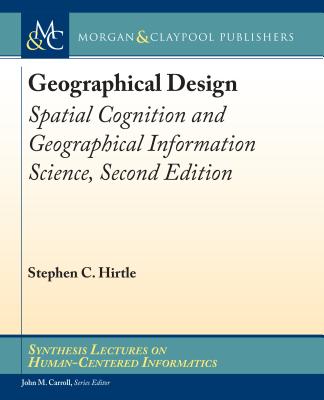CJKV Information Processing
暫譯: CJKV 資訊處理
Ken Lunde
- 出版商: O'Reilly
- 售價: $2,520
- 貴賓價: 9.5 折 $2,394
- 語言: 英文
- 頁數: 1128
- 裝訂: Paperback
- ISBN: 1565922247
- ISBN-13: 9781565922242
已過版
買這商品的人也買了...
-
 SQL Server 2000 資料庫設計與系統管理
SQL Server 2000 資料庫設計與系統管理$650$514 -
 Digital Character Animation 2, Volume II: Advanced Techniques
Digital Character Animation 2, Volume II: Advanced Techniques$2,050$1,948 -
 C++ Primer, 3/e 中文版
C++ Primer, 3/e 中文版$980$774 -
 Agile Software Development
Agile Software Development$1,880$1,786 -
 $825Cisco CCNA Exam #640-607 Certification Guide, 3/e
$825Cisco CCNA Exam #640-607 Certification Guide, 3/e -
 LPI Linux 資格檢定 (LPI Linux Certification in a Nutshell)
LPI Linux 資格檢定 (LPI Linux Certification in a Nutshell)$880$695 -
 C++ Builder 6 完全攻略
C++ Builder 6 完全攻略$690$587 -
 作業系統概念 (Operating System Concepts, 6/e Windows XP Update)
作業系統概念 (Operating System Concepts, 6/e Windows XP Update)$780$741 -
 ASP.NET 程式設計徹底研究
ASP.NET 程式設計徹底研究$590$466 -
 STRUTS 實作手冊(Struts in Action: Building Web Applications with the Leading Java Framework)
STRUTS 實作手冊(Struts in Action: Building Web Applications with the Leading Java Framework)$690$538 -
 Windows Server 2003 系統建置篇
Windows Server 2003 系統建置篇$590$466 -
 深入淺出 JBuilder 程式設計實作(JBuilder 9.0/8.0/7.0 適用) (Charlie Calvert's Learn Jbuilder)
深入淺出 JBuilder 程式設計實作(JBuilder 9.0/8.0/7.0 適用) (Charlie Calvert's Learn Jbuilder)$720$562 -
 重構─改善既有程式的設計
重構─改善既有程式的設計$720$569 -
 鳥哥的 Linux 私房菜-伺服器架設篇
鳥哥的 Linux 私房菜-伺服器架設篇$750$638 -
 鳥哥的 Linux 私房菜─基礎學習篇增訂版
鳥哥的 Linux 私房菜─基礎學習篇增訂版$560$476 -
 CCNA Self-Study: Interconnecting Cisco Network Devices (ICND) 640-811, 640-801, 2/e
CCNA Self-Study: Interconnecting Cisco Network Devices (ICND) 640-811, 640-801, 2/e$2,390$2,271 -
 創新者的解答
創新者的解答$400$316 -
 人月神話:軟體專案管理之道 (20 週年紀念版)(The Mythical Man-Month: Essays on Software Engineering, Anniversary Edition, 2/e)
人月神話:軟體專案管理之道 (20 週年紀念版)(The Mythical Man-Month: Essays on Software Engineering, Anniversary Edition, 2/e)$480$379 -
 JSP 2.0 技術手冊
JSP 2.0 技術手冊$750$593 -
 建構嵌入式 Linux 系統
建構嵌入式 Linux 系統$780$616 -
 $1,080Windows System Programming, 3/e (Hardcover)
$1,080Windows System Programming, 3/e (Hardcover) -
 19 Deadly Sins of Software Security
19 Deadly Sins of Software Security$1,780$1,691 -
 $1,080CMMI: Guidelines for Process Integration and Product Improvement, 2/e
$1,080CMMI: Guidelines for Process Integration and Product Improvement, 2/e -
 $2,043Unicode Explained (Paperback)
$2,043Unicode Explained (Paperback) -
 蘋果專業訓練教材:Final Cut Pro 6 (Apple Pro Training Series: Final Cut Pro 6)
蘋果專業訓練教材:Final Cut Pro 6 (Apple Pro Training Series: Final Cut Pro 6)$860$731
相關主題
商品描述
CJKV Information Processing is the definitive guide for tackling the difficult issues faced when dealing with complex Asian languages -- Chinese, Japanese, Korean, and Vietnamese -- in the context of computing or Internet services.
Unlike the English alphabet with a mere 26 letters, these complex writing systems use multiple alphabets comprising thousands of characters. Handling such an unwieldy amount of data is formidable and complex. Until now, working with these writing systems was an unattainable task to most, but this book clarifies the issues, even to those who don't understand East Asian languages.
This new book contains revised information from Ken Lunde's first book, Understanding Japanese Information Processing, and supplements each chapter with meticulous details about how the Chinese (hanzi), Japanese (kana and kanji), Korean (hangul and hanja), and Vietnamese (Quoc ngu, chu Nom, and chu Han) writing systems have been implemented on contemporary computer systems. This book is unique in that it does not simply rattle off information that can be found in other sources, but rather it provides the reader with hitherto unexplained insights into how these complex writing systems have been adapted for use on computers, and provides the user and developer alike with useful and time-saving tips and techniques.
Information on today's hot topics, such as how these writing systems impact contemporary Internet resources like the Web, HTML, XML, Java, and Adobe Acrobat, is also provided.
This book is of incalculable value for the developer, programmer, user, and researcher -- anyone who comes into contact with these characters in the context of computers or the Internet needs this book. Topics covered in this book include:
This volume also contains a host of valuable appendixes, such as code conversion tables, character set tables, character set indexes, mapping tables, Perl code examples, a glossary, and a detailed bibliography.
Unlike the English alphabet with a mere 26 letters, these complex writing systems use multiple alphabets comprising thousands of characters. Handling such an unwieldy amount of data is formidable and complex. Until now, working with these writing systems was an unattainable task to most, but this book clarifies the issues, even to those who don't understand East Asian languages.
This new book contains revised information from Ken Lunde's first book, Understanding Japanese Information Processing, and supplements each chapter with meticulous details about how the Chinese (hanzi), Japanese (kana and kanji), Korean (hangul and hanja), and Vietnamese (Quoc ngu, chu Nom, and chu Han) writing systems have been implemented on contemporary computer systems. This book is unique in that it does not simply rattle off information that can be found in other sources, but rather it provides the reader with hitherto unexplained insights into how these complex writing systems have been adapted for use on computers, and provides the user and developer alike with useful and time-saving tips and techniques.
Information on today's hot topics, such as how these writing systems impact contemporary Internet resources like the Web, HTML, XML, Java, and Adobe Acrobat, is also provided.
This book is of incalculable value for the developer, programmer, user, and researcher -- anyone who comes into contact with these characters in the context of computers or the Internet needs this book. Topics covered in this book include:
- Writing systems
- Character set standards
- Encoding methods
- Input methods
- Font formats
- Typography
- Output methods
- Programming and code conversion techniques
- Dictionaries and dictionary software
This volume also contains a host of valuable appendixes, such as code conversion tables, character set tables, character set indexes, mapping tables, Perl code examples, a glossary, and a detailed bibliography.
商品描述(中文翻譯)
《CJKV 信息處理》是一本針對處理複雜亞洲語言(中文、日文、韓文和越南文)在計算或網路服務中所面臨的困難問題的權威指南。
與僅有 26 個字母的英文字母不同,這些複雜的書寫系統使用多種字母,包含數千個字符。處理如此龐大的數據量是艱鉅且複雜的。直到現在,對於大多數人來說,使用這些書寫系統仍然是一項難以達成的任務,但本書澄清了這些問題,即使是對於不懂東亞語言的人來說。
這本新書包含了 Ken Lunde 首本書籍《理解日本信息處理》的修訂資訊,並在每一章中補充了有關中文(漢字)、日文(假名和漢字)、韓文(韓字和漢字)以及越南文(國語、喃字和漢字)書寫系統在當代計算機系統中實現的詳細資訊。本書的獨特之處在於,它不僅僅是羅列其他來源中可以找到的資訊,而是為讀者提供了迄今為止未解釋的見解,說明這些複雜的書寫系統如何被適應用於計算機,並為用戶和開發者提供有用且省時的技巧和技術。
本書還提供了當今熱門主題的資訊,例如這些書寫系統如何影響當代網路資源,如網頁、HTML、XML、Java 和 Adobe Acrobat。
這本書對於開發者、程式設計師、用戶和研究人員來說具有無法估量的價值——任何在計算機或網路環境中接觸這些字符的人都需要這本書。本書涵蓋的主題包括:
- 書寫系統
- 字符集標準
- 編碼方法
- 輸入方法
- 字型格式
- 排版
- 輸出方法
- 程式設計和代碼轉換技術
- 字典和字典軟體
本卷還包含大量有價值的附錄,如代碼轉換表、字符集表、字符集索引、映射表、Perl 代碼範例、術語表和詳細的參考書目。























